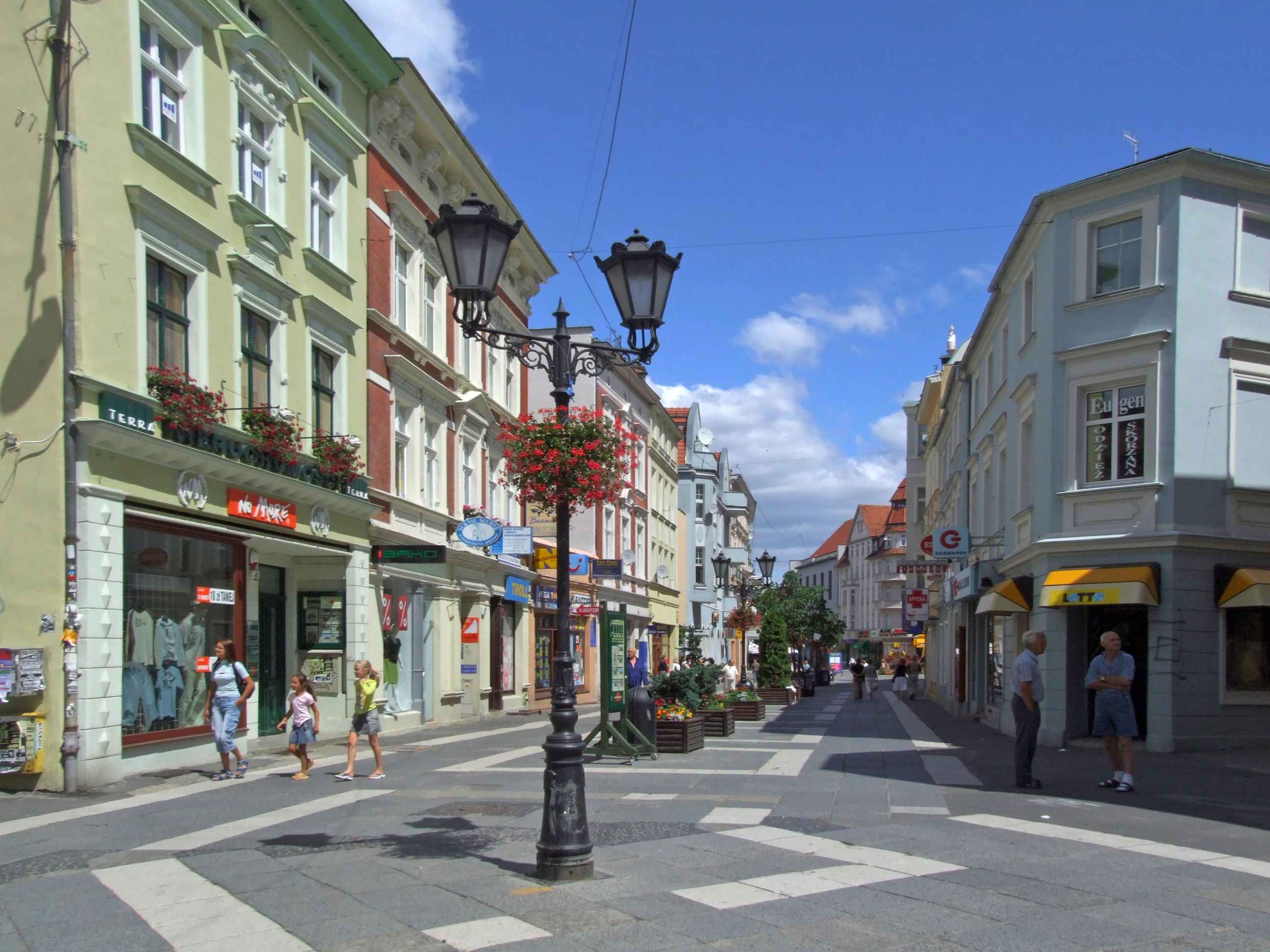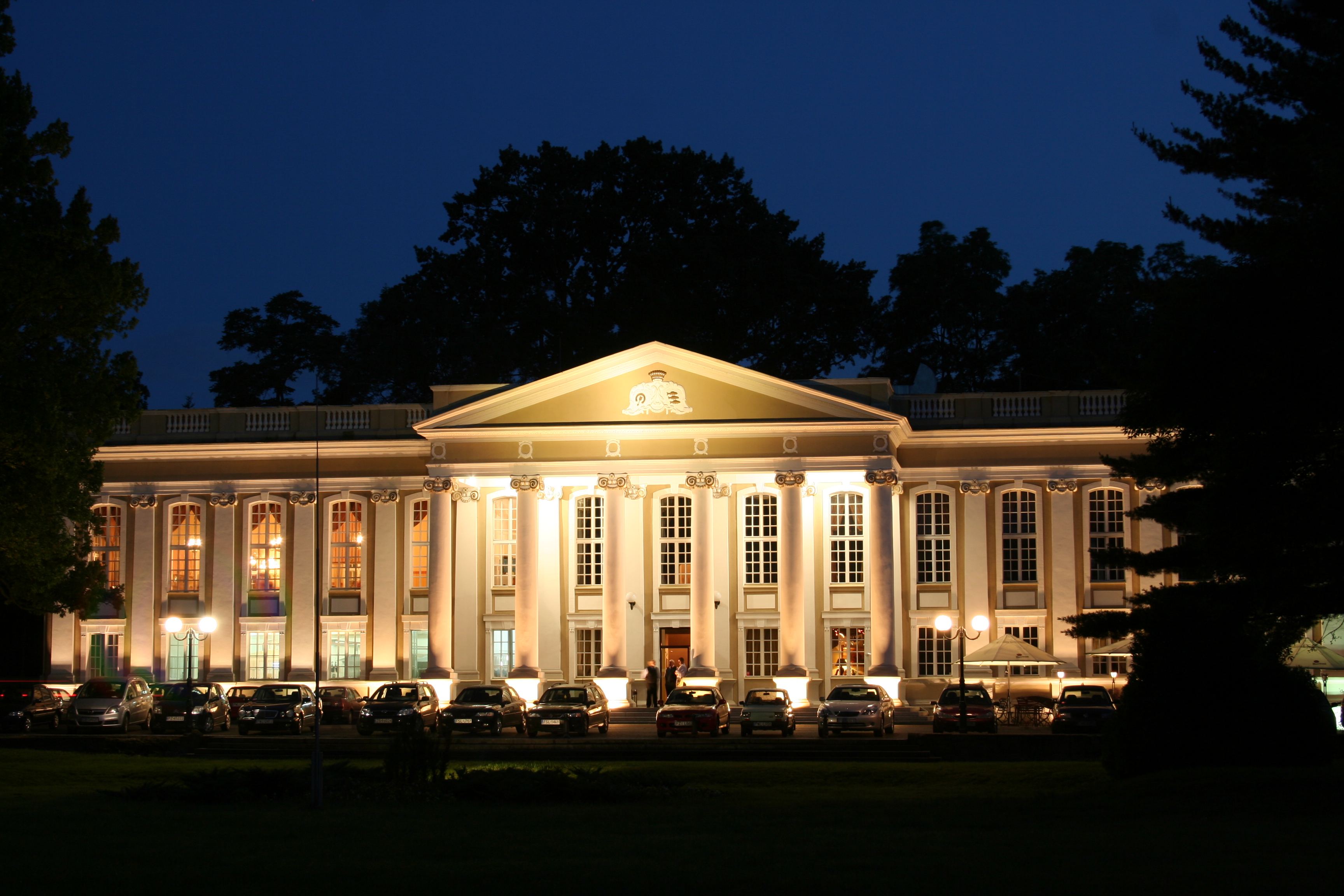|
National Road 32 (Poland)
Droga krajowa nr 32 (translates from Polish as ''national road 32'') is route that is part of the Polish national roads network. It runs through Lubusz and Greater Poland Voivodeships, leading from the former border crossing with Germany in Gubinek to Stęszew, where meets national road 5. Locally act as a bypass for small towns through the route. For a 14 km stretch it runs on the route of expressway S3. National road 32 connects Poznań urban area and Zielona Góra urban area with Polish-German border. Major towns along the route * Gubinek, Polish-German border * Gubin * Krosno Odrzańskie * Dąbie ( national road 29) * Zielona Góra ( S3, national road 27) * Sulechów (S3, national road 3) * Wolsztyn * Grodzisk Wielkopolski Grodzisk Wielkopolski (german: Grätz) is a town in western Poland, in Greater Poland Voivodeship (Wielkopolskie), with a population of 13,703 (2006). It is south-west of Poznań, the voivodeship capital. It is the seat of Grodzisk Wielko ... [...More Info...] [...Related Items...] OR: [Wikipedia] [Google] [Baidu] |
Lubusz Voivodeship
Lubusz Voivodeship, or Lubuskie Province ( pl, województwo lubuskie ), is a voivodeship (province) in western Poland. It was created on January 1, 1999, out of the former Gorzów Wielkopolski and Zielona Góra Voivodeships, pursuant to the Polish local government reforms adopted in 1998. The province's name recalls the historic Lubusz Land (''Lebus'' or ''Lubus''), although parts of the voivodeship belong to the historic regions of Silesia, Greater Poland and Lusatia. Until 1945, it mainly formed the Neumark within the Prussian Province of Brandenburg. The functions of regional capital are shared between two cities: Gorzów Wielkopolski and Zielona Góra. Gorzów serves as the seat of the centrally-appointed voivode, or governor, and Zielona Góra is the seat of the elected regional assembly (sejmik) and the executive elected by that assembly, headed by a marshal (''marszałek''). In addition, the voivodeship includes a third city (Nowa Sól) and a number of towns. The reg ... [...More Info...] [...Related Items...] OR: [Wikipedia] [Google] [Baidu] |
Krosno Odrzańskie
Krosno Odrzańskie (german: Crossen an der Oder) is a city on the east bank of Oder River, at the confluence with the Bóbr. The town in Western Poland with 11,319 inhabitants (2019) is the capital of Krosno County. It is assigned to the Lubusz Voivodeship (since 1999), previously part of Zielona Góra Voivodeship (1975–1998). History The town was first mentioned as ''Crosno'' in 1005, when Duke Bolesław I Chrobry of Poland had a fortress built here in the course of his armed conflict with Emperor Henry II and the West Slavic Veleti confederation. Due to its strategic location as a point of passage across the Oder, it played an important role at the western border of the Polish kingdom with the Holy Roman Empire during the 11th to 13th centuries. In 1163 Krosno was part of the Duchy of Silesia ruled by Bolesław I the Tall of the Silesian Piasts at Wrocław. In 1201 it received its town charter by Bolesław's son Duke Henry I the Bearded. Henry erected a stone castle at Kr ... [...More Info...] [...Related Items...] OR: [Wikipedia] [Google] [Baidu] |
Bundesstraße 97 Number
''Bundesstraße'' (German for "federal highway"), abbreviated ''B'', is the denotation for German and Austrian national highways. Germany Germany's ''Bundesstraßen'' network has a total length of about 40,000 km. German ''Bundesstraßen'' are labelled with rectangular yellow signs with black numerals, as opposed to the white-on-blue markers of the ''Autobahn'' controlled-access highways. ''Bundesstraßen'', like autobahns, are maintained by the federal agency of the Transport Ministry. In the German highway system they rank below autobahns, but above the ''Landesstraßen'' and ''Kreisstraßen'' maintained by the federal states and the districts respectively. The numbering was implemented by law in 1932 and has overall been retained up to today, except for those roads located in the former eastern territories of Germany. One distinguishing characteristic between German ''Bundesstraßen'' and ''Autobahnen'' is that there usually is a general 100 km/h (62 mph) spe ... [...More Info...] [...Related Items...] OR: [Wikipedia] [Google] [Baidu] |
Flag Of Germany
The national flag of Germany is a tricolour (flag), tricolour consisting of three equal horizontal bands displaying the national colours of Germany: Sable (heraldry), black, Gules, red, and Or (heraldry), gold (german: :de:Schwarz-Rot-Gold, Schwarz-Rot-Gold). The flag was first sighted in 1848 in the German Confederation. It was officially adopted as the national flag of the Weimar Republic from 1919 to 1933, and has been in use since its reintroduction in West Germany in 1949. Since the mid-19th century, Germany has two competing traditions of national colours, black-red-gold and black-white-red. Black-red-gold were the colours of the German revolutions of 1848–1849, 1848 Revolutions, the Weimar Republic of 1919–1933 and the Federal Republic (since 1949). They were also Flag of East Germany, adopted by the German Democratic Republic (1949–1990). The colours black-white-red appeared for the first time in 1867, in the constitution of the North German Confederation. This n ... [...More Info...] [...Related Items...] OR: [Wikipedia] [Google] [Baidu] |
DK32-PL
''DK3'' is the third and final studio album by American girl-group Danity Kane. It was released on October 27, 2014, by Stereotypes Music and Mass Appeal, in association with BMG Rights Management. It was the group's first album in six years following their first disbandment, as well as their first album without original group members D. Woods, who left the group in 2008, and Aundrea Fimbres, who left five months prior to the album’s release, leading to the removal of her vocals on much of the material for ''DK3''. Danity Kane reunited with production team The Stereotypes to work on the majority of the album, with producer Dem Jointz contributing the song "All in a Day's Work." Upon its release, ''DK3'' was very well received by critics, who praised the album's diversity and commercial appeal, as well as Danity Kane's vocals. Their first independent release following their departure from Bad Boy Records, ''DK3'' debuted and peaked at number 44 on the US ''Billboard'' 200 and b ... [...More Info...] [...Related Items...] OR: [Wikipedia] [Google] [Baidu] |
Flag Of Poland
The national flag of Poland ( pl, flaga Polski) consists of two horizontal stripes of equal width, the upper one white and the lower one red. The two colours are defined in the Polish constitution as the national colours. A variant of the flag with the national coat of arms in the middle of the white fess is legally reserved for official use abroad and at sea. A similar flag with the addition of a white eagle is used as the naval ensign of Poland. White and red were officially adopted as national colours in 1831, although these were associated with Poland since the Middle Ages and were emphasized on royal banners. They are of heraldic origin and derive from the tinctures (colours) of the coats of arms of the two constituent nations of the Polish–Lithuanian Commonwealth (i.e., the White Eagle of Poland, and the Pursuer of the Grand Duchy of Lithuania, a white knight riding a white horse), both on a red shield. Until 1831, Polish soldiers wore cockades of various colour combi ... [...More Info...] [...Related Items...] OR: [Wikipedia] [Google] [Baidu] |
Grodzisk Wielkopolski
Grodzisk Wielkopolski (german: Grätz) is a town in western Poland, in Greater Poland Voivodeship (Wielkopolskie), with a population of 13,703 (2006). It is south-west of Poznań, the voivodeship capital. It is the seat of Grodzisk Wielkopolski County, and also of the smaller administrative district called Gmina Grodzisk Wielkopolski. The suffix "Wielkopolski" distinguishes it from the town of Grodzisk Mazowiecki in east-central Poland. History The settlement was first mentioned in 1257 by the name of Grodisze in a document by Przemysł I of Greater Poland. It was referred to as a village belonging to the Cistercians. The exact date when the town received its charter is unknown. Documents say that the town definitely had its town charter in 1303. It was a private town of Polish noble families of Ostroróg and Opaliński, administratively located within the Poznań Voivodeship in the Greater Poland Province of the Polish Crown. The first Jews settled in the town at the begin ... [...More Info...] [...Related Items...] OR: [Wikipedia] [Google] [Baidu] |
Wolsztyn
Wolsztyn (german: Wollstein) is a town in western Poland, on the western edge of Greater Poland Voivodeship. It is the seat of Wolsztyn County, and of the smaller administrative district of Gmina Wolsztyn. Geography The town is situated within the historic Greater Poland region, located on the small Dojca river, a headstream of the Obra, about southwest of Poznań. The municipal area includes a large lake ('; Wolsztyn Lake), next to which is a palace built in Classical style in the early 20th century, now used as a hotel and restaurant, and a park. Nearby tourist destinations include the Pszczew Landscape Park and the Przemęt Landscape Park. History The current settlement was established about 1285 on a causeway across the swampy Dojca River, probably by Cistercian monks descending from Obra Abbey. It developed as a centre of wool trade and cloth manufacturing on the road from Poznań to Lusatia, vested with market rights in 1424. Wolsztyn's town privileges were con ... [...More Info...] [...Related Items...] OR: [Wikipedia] [Google] [Baidu] |
National Road 3 (Poland)
National road 3 ( pl, Droga krajowa nr 3) is a route belonging to the Polish national road network. The highway connects the northwestern and southwestern regions of Poland, running from Świnoujście at the German border to Jakuszyce at the Czech border, traversing through the West Pomeranian, Lubusz and Lower Silesian voivodeships. National road 3 is a component of European highway E65. National road 3 is currently being upgraded to express road S3, with the older highway being classified as Gmina road running parallel or near the completed sections of the modern expressway. Major cities and towns along the route * Świnoujście ( road 93) * Goleniów ( road 6) * Szczecin ( road 6, 10) * Myślibórz ( road 26) * Gorzów Wielkopolski ( road 22) * Skwierzyna ( road 24) * Świebodzin ( road 2) * Sulechów ( road 32) * Zielona Góra ( road 32) * Drożów ( road 12) * Lubin ( road 36) * Legnica ( road 4, 94) * Bolków ( road 5) * Jelenia Góra ( road 30) * Jakuszyce, ... [...More Info...] [...Related Items...] OR: [Wikipedia] [Google] [Baidu] |
Sulechów
Sulechów (pronounced , german: Züllichau) is a town located within the Zielona Góra County, in Lubusz Voivodeship, western Poland. It is the administrative seat of the Gmina Sulechów. Established in the Middle Ages, the town features many historical monuments significant to the Polish Lubusz region. From 1975 to 1998 Sulechów was part of Zielona Góra Voivodeship. The town limits cover . Olga Tokarczuk, the Nobel Prize in Literature winner for 2018 was born in 1962 in Sulechów. Geography Sulechów is situated in the historic Lower Silesia region, north of the Oder river. The town centre is located about northeast of the regional capital Zielona Góra, where the national road 32 to Poznań crosses the expressway S3 to Gorzów Wielkopolski. The regional Zielona Góra Airport is about away. History The settlement of the region on the Middle Oder dates back to the 4th century AD. Medieval Poland In the late 10th century, the area was included in the emerging Polish st ... [...More Info...] [...Related Items...] OR: [Wikipedia] [Google] [Baidu] |




